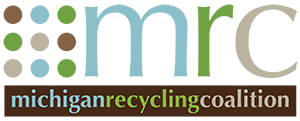Compost Education
Backyard Composting and Vermicomposting Resources and Links
The US Composting Council recognizes that composting is occurring at a variety of different levels across the US; from the homeowners composting some leaves and food scraps in their back yards, to the commercial facilities composting 1000s of cubic yards per year. It’s all good and it’s all part of our national composting infrastructure.
Here is some useful and practical information on backyard composting, vermicomposting. Master Gardener programs include education about compost as well.
Our friends at the Institute for Local Self Reliance created a webinar and gathered resources on Composting at Home: an Introduction to the Basics.
The Information Below is available on Washtenaw County’s website www.washtenaw.org
Composting Basics: The What & Why
Getting Started: Adding Organic Material
Compost materials are often categorized as either ’greens’ which provide Nitrogen or ’browns’ which provide Carbon. They are also known as wet and dry materials, respectively. Food scraps, green plants, lawn clippings, and tea bags are all examples of ’greens’; while leaves, straw, and twigs are examples of ’browns’. Standard ratios of one to two (1:2) green:brown gives best results and the quickest decomposition. These numbers can be visually approximated.
Manure from herbivorous animals, such as rabbits and chickens makes a great, nitrogenous addition to your pile, especially in winter when it can be used to jump start the process and heat up the pile during the cold months.
The list below indicates what materials you should and should not add to your home compost for best results. Municipal composting, such as composting provided by the City of Ann Arbor to its residents, can handle a wider variety of items because the compost piles are professionally managed, get much hotter, and are much larger.
Materials to Add
Most food scraps - like vegetables and fruits (no stickers)
Cardboard contaminated with food (like pizza boxes)
Coffee grounds and tea bags
Eggshells
Grass clippings
Hair and fur
Leaves
Paper towels and napkins
Sawdust and wood chips
Straw and hay
Materials to Avoid
Animal products - dairy and meats
Coal
Invasive or diseased plants
Cooking oils and very greasy foods
Wood ash

There are a wide variety in compost bins you can build on your own or purchase for use. What you use will depend on your personal preference, compost location, and materials available.
